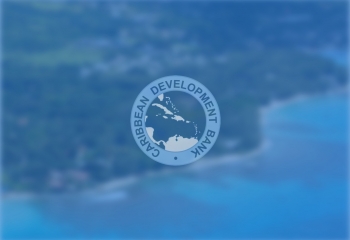Belize’s cacao industry to expand exports and improve livelihoods through Standby Facility project

Cocoa beans are a highly traded product and the main ingredient in chocolate manufacturing. According to the latest Global Chocolate Market Report the industry was valued at USD137.9 billion in 2019 and is expected to increase to USD182.09 billion by 2025.
In Belize, these beans account for almost 98 per cent of cocoa-chocolate exports to markets in the United States, Japan and the European Union. Smallholder farmers are the largest group in local cacao cultivation and about 15,000 persons are dependent on the industry. Approximately 3,000 acres of cacao is currently cultivated.
Despite these figures, Belize is considered a small producer on an international scale. According to UN Comtrade, the country’s participation in the cocoa-chocolate global value chain totalled less than USD600,000 in 2016. Efforts to compete with larger producers in the region are often challenged by constraints to productivity, quality, value addition and export development.
The Toledo Cacao Growers’ Association – the TCGA – is the country’s first and primary group that represents and provides technical support to cacao farmers. It also negotiates sales to international buyers.
Through a project supported by the European Union and the Caribbean Development Bank, the TCGA is working to boost the country’s cocoa-chocolate exports, while bringing value-added contributions to Belize’s agri-food system and its people.
The "Increasing Participation of the Belizean Cacao Industry in the Cocoa-Chocolate Global Value Chain” project is a two-year initiative under the CARIFORUM-European Union Economic Partnership Agreement (EPA) and the CARICOM Single Market and Economy (CSME) Standby Facility for Capacity Building.
“Increasing trade and the creation of an enabling environment will add much needed fuel to the growth engine driving Belize’s development. At the Bank, we are increasing the prominence of trade-related initiatives, recognizing its role in supporting development and reducing poverty. Trade is an important of growth and an important pillar in accomplishing sustainable development targets. We remain an ardent partner of the Government of Belize set on delivering the promise of a better life to each of its citizens.” said Dr. Hyginus Leon, President, Caribbean Development Bank.
Implementation is centralised in the country’s southern district of Toledo, where cacao is cultivated by hundreds of smallholder farmers. As the national project implementation agency, the TCGA is bringing together various stakeholders involved in the production of cacao beans to build deeper, more strategic partnerships. Collaborations feature the Ministry of Economic Development, Petroleum, Investment, Trade and Commerce, the Ministry of Agriculture, the Belize Bureau of Standards, the Belize Agricultural Health Authority and hundreds of smallholder farmers.
Together they are encouraging good agricultural practices for the production of high-quality beans for Fairtrade and organic certification. They are also adding value to cacao through the establishment of a facility where cacao beans can be processed and packaged as cocoa powder and other products. To promote their products, the TCGA and its members have access to greater marketing channels through a new website and online presence.
These improvements are strengthening the national value chain and facilitate acceptance of Belizean cocoa-chocolate by the European Union and other markets, where certified cacao products are in high demand.
Toledo is populated mainly by indigenous Maya peoples who have deep historical linkages with cacao production. The community suffers from poverty levels that exceed the national average. Unemployment is high and particularly affects youth and women. Increasing sales of cocoa-chocolate goods through the project is expected to create more employment and lead to higher household incomes and strengthen communities.
“The project will allow the farmers have a sense of ownership in the enterprise of growing cacao, processing, including up to the distribution to the end consumer. This process will further create employment for the many unemployed women and youths in our area that currently do not have these opportunities,” said Mr. Orlando Coc, Project Coordinator and Executive Director of the TCGA.
Gender and social equality are also prioritised as many women cacao farmers face challenges to participating in the value chain such as gender stereotypes, low or no education and lack of decision-making roles. The TCGA is reducing these barriers through labour-saving technologies and equipment to reduce the negative health and socio-economic outcomes. By increasing the use of technology in cacao processing, they are making the sector more attractive to encourage the participation of young people.
“I am delighted and happy to hear that the forgotten district is finally getting some attention. Toledo District suffers with the highest poverty index and highest unemployment and as such congratulations and thank you again to the CDB and the European Union for redirecting some focus to the Toledo District and the opportunity it presents to agriculture and agro-processing. We note especially the holistic nature of the project which seeks to among other things improve cacao through a research and development path,” said Dr. Osmond Martinez, Chief Executive Officer, Economic Development Belize.
As the project strengthens Belize’s role in the global cocoa-chocolate value chain, it is ensuring a more thriving and sustainable socio-economic well-being of cacao farmers and rural communities. These impacts will go a long way in enhancing country’s trading power and economy all while transforming the lives of the people of Belize.
Photo caption: A cacao grower prepares cacao beans for processing in Toledo District, Belize.


